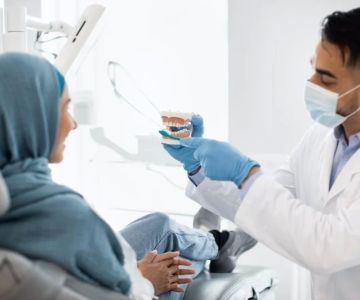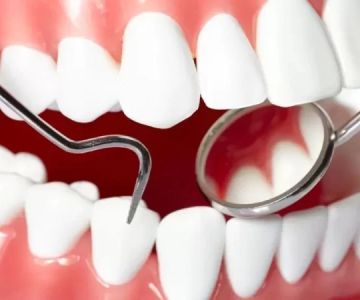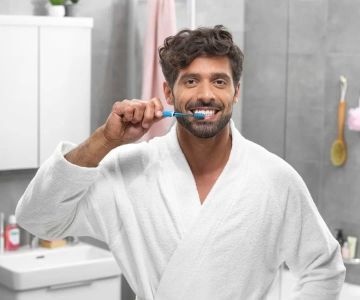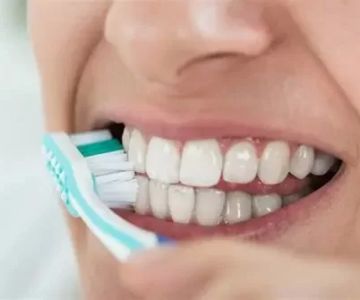What Does Good Oral Hygiene Look Like? – The Ultimate Guide to Oral Care
Oral hygiene plays a crucial role in maintaining overall health, but many people aren’t fully aware of what good oral hygiene truly looks like. Brushing your teeth twice a day and flossing regularly are often considered basic practices, but achieving and maintaining good oral health involves much more. In this guide, we will explore what good oral hygiene looks like, how to adopt the best habits for optimal oral care, and why it is so important for your overall well-being.
1. The Importance of Good Oral Hygiene
Oral hygiene refers to the practices you follow to maintain the health of your teeth, gums, and mouth. Proper oral care helps prevent dental issues like cavities, gum disease, and bad breath. But it also plays a key role in preventing other health problems, as research has linked poor oral hygiene to systemic conditions such as heart disease, diabetes, and respiratory infections.
1.1 Preventing Common Dental Issues
By brushing your teeth and using dental floss, you can help remove food particles and plaque that can lead to cavities and gum disease. Plaque is a sticky film of bacteria that forms on your teeth and gums, and if it is not removed through regular cleaning, it can harden into tartar, leading to gum inflammation, tooth decay, and tooth loss.
1.2 Oral Hygiene and Systemic Health
Good oral hygiene isn’t just about maintaining a nice smile; it’s also essential for your overall health. Studies have shown that oral infections caused by poor dental hygiene can contribute to serious health problems like heart disease, strokes, and complications in diabetes management. Taking care of your mouth is an important preventive measure for long-term health.
2. Key Practices for Good Oral Hygiene
Good oral hygiene isn’t just about brushing your teeth; it’s a combination of habits and practices that should be followed consistently. Below are the key practices that contribute to excellent oral health:
2.1 Brushing Your Teeth Correctly
Brushing your teeth is the foundation of good oral hygiene. However, it’s important to brush your teeth the right way. You should use a soft-bristled toothbrush and fluoride toothpaste, as fluoride helps to prevent tooth decay. Brush your teeth for at least two minutes, making sure to reach all surfaces of your teeth, including the outer, inner, and chewing surfaces. Brushing your tongue can also help remove bacteria that contribute to bad breath.
2.2 Flossing Daily
Flossing is just as important as brushing. It helps remove food particles and plaque from between your teeth and along the gum line, where your toothbrush might not reach. Floss at least once a day, using a clean section of floss for each space between your teeth. If traditional floss is difficult to use, consider using floss picks or a water flosser for easier and more effective cleaning.
2.3 Using Mouthwash
While mouthwash is not a substitute for brushing or flossing, it can complement your oral hygiene routine. Mouthwash helps rinse away remaining food particles and bacteria and can reduce plaque buildup. Some mouthwashes also contain fluoride, which can help strengthen tooth enamel and reduce cavities. Choose a mouthwash that suits your needs, whether it’s for fresh breath, cavity protection, or gum health.
2.4 Regularly Replacing Your Toothbrush
Your toothbrush is an essential tool in your oral hygiene routine, but it needs to be replaced regularly. Over time, the bristles of a toothbrush become worn down and less effective at cleaning your teeth. It’s recommended to replace your toothbrush every 3-4 months or sooner if the bristles appear frayed.
3. The Role of Diet in Oral Hygiene
Your diet plays a significant role in your oral health. What you eat can either contribute to dental issues or help protect your teeth and gums. A balanced diet, rich in vitamins and minerals, is essential for maintaining good oral hygiene.
3.1 Foods That Promote Good Oral Health
Foods high in calcium, like dairy products, help strengthen your teeth. Crunchy fruits and vegetables, such as apples and carrots, help clean your teeth naturally while providing essential nutrients. Leafy greens are rich in vitamins and help maintain healthy gums. Additionally, foods high in antioxidants, such as berries, can reduce inflammation and protect your gums from disease.
3.2 Avoiding Foods That Harm Your Teeth
While certain foods can protect your teeth, others can harm them. Sugary and sticky foods, like candy and soda, can contribute to plaque buildup and tooth decay. Acidic foods, like citrus fruits and wine, can erode tooth enamel over time. It’s important to limit these foods and drink plenty of water throughout the day to help wash away food particles and acids.
3.3 Drinking Water for Oral Health
Drinking water is one of the simplest and most effective ways to support your oral health. Water helps rinse away food particles and bacteria in your mouth and can help neutralize acids that contribute to tooth decay. Water also helps maintain the moisture needed for healthy gums and a fresh mouth.
4. The Importance of Regular Dental Checkups
In addition to maintaining a good oral hygiene routine at home, regular visits to the dentist are essential for keeping your mouth healthy. Dentists can spot issues that you might not notice, such as cavities or gum disease, and provide treatment before they become serious problems.
4.1 Professional Cleaning
Even with a diligent brushing and flossing routine, plaque can still build up over time. During your dental checkup, a hygienist will perform a professional cleaning to remove plaque and tartar that can’t be eliminated with regular brushing alone. Regular cleanings help keep your teeth and gums in top shape.
4.2 Early Detection of Dental Issues
Regular dental exams allow your dentist to detect problems early, potentially saving you from more extensive and costly treatments later on. Your dentist will also check for signs of oral cancer, gum disease, and other oral health concerns, providing peace of mind and ensuring that your smile remains healthy.
5. Real-Life Experience: A Story of Oral Hygiene Transformation
Consider the story of Sarah, a busy professional who struggled with maintaining good oral hygiene. After visiting her dentist for a routine checkup, Sarah discovered that she had early-stage gum disease. Her dentist recommended improving her brushing technique, adding daily flossing, and making better food choices. Over the next few months, Sarah followed the advice, and with regular dental visits, her gum health improved drastically. She now has a brighter smile and feels confident that her oral hygiene routine is on track.
This story highlights the importance of not only practicing good daily oral hygiene but also seeking professional advice and care when needed. Regular dentist visits, combined with a solid oral hygiene routine, can lead to significant improvements in your dental health and overall well-being.
6. How to Start Practicing Good Oral Hygiene
Starting a new oral hygiene routine doesn’t have to be overwhelming. Begin by setting small goals, such as brushing for two minutes twice a day and flossing once daily. Gradually incorporate mouthwash and regular dental checkups into your routine. Remember, consistency is key to achieving and maintaining good oral hygiene.
If you need guidance on products or services to improve your oral hygiene, consider visiting Dentistry Toothtruth, where you can find the best dental care products and recommendations for maintaining a healthy smile.







 NeighborHealth2.0 (242 review)
NeighborHealth2.0 (242 review) Romani Orthodontics4.0 (198 review)
Romani Orthodontics4.0 (198 review) Valleywise Community Health Center - Mesa3.0 (252 review)
Valleywise Community Health Center - Mesa3.0 (252 review) Christensen Orthodontics5.0 (108 review)
Christensen Orthodontics5.0 (108 review) Gentle Dental West Roxbury4.0 (285 review)
Gentle Dental West Roxbury4.0 (285 review) The Smile Institute Advanced Dentistry & Orthodontics4.0 (256 review)
The Smile Institute Advanced Dentistry & Orthodontics4.0 (256 review) The Importance of Oral Health Education During Pregnancy for a Healthy Pregnancy
The Importance of Oral Health Education During Pregnancy for a Healthy Pregnancy Best Tips for Brushing Your Teeth Properly for Healthy Gums: Essential Techniques for Oral Health
Best Tips for Brushing Your Teeth Properly for Healthy Gums: Essential Techniques for Oral Health Why Skipping Dental Checkups Can Lead to Bigger Oral Health Problems
Why Skipping Dental Checkups Can Lead to Bigger Oral Health Problems Advantages of Porcelain Dental Restorations
Advantages of Porcelain Dental Restorations How Can Diabetes Cause Tooth and Gum Problems? Preventing and Managing Oral Health Issues
How Can Diabetes Cause Tooth and Gum Problems? Preventing and Managing Oral Health Issues Healthy Habits for Promoting Good Oral Health and Hygiene: Tips for a Healthy Smile
Healthy Habits for Promoting Good Oral Health and Hygiene: Tips for a Healthy Smile